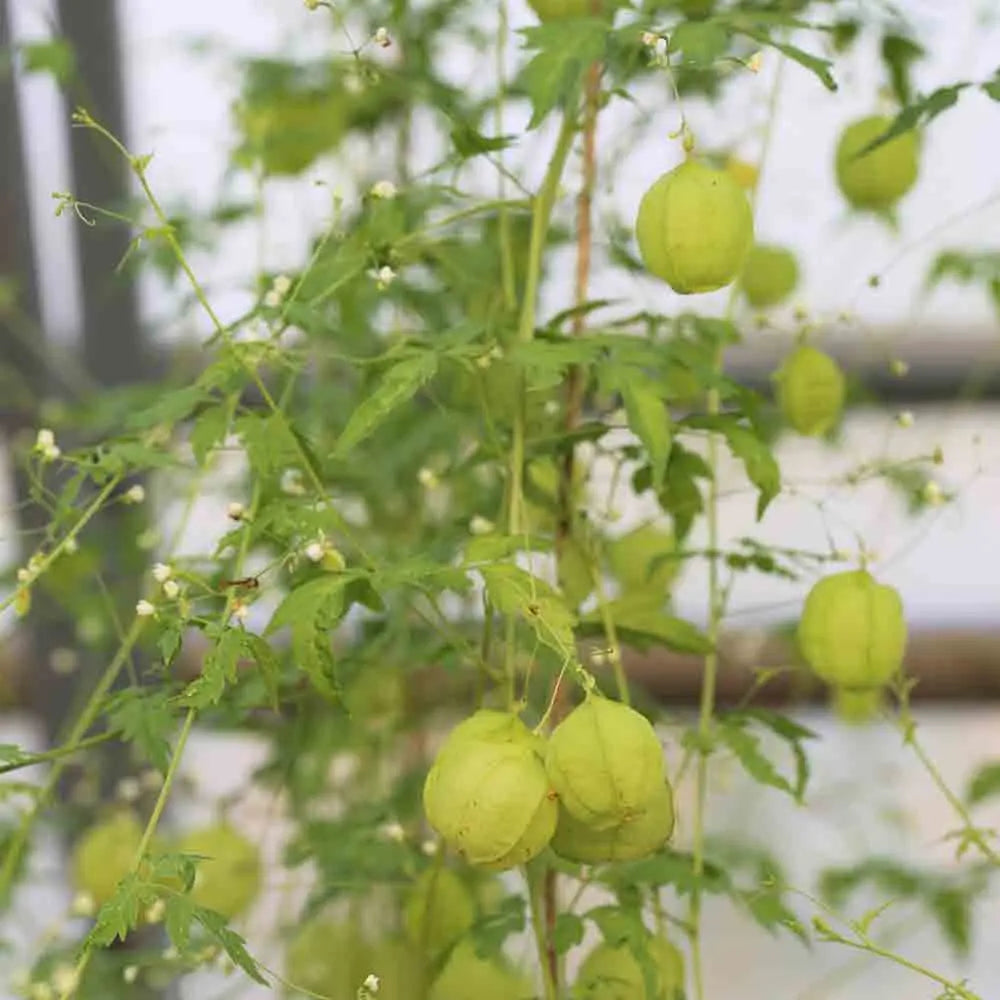HEART PEAS AB
Cardiospermum halicacabum
The heart pea (Cardiospermum halicacabum), also known as the Indian heart, is native to tropical Africa as well as North and South America. This variety is inedible, and its seeds are often used for decoration.
The heart pea is an annual or biennial climbing vine with a woody, trailing rootstock, growing to 3 to 4 meters in height. This plant proliferates to the point that it is sometimes considered a weed in some regions.
The leaves and stems of the heart pea plant are traditionally used to relieve rheumatism, skin problems, and certain respiratory disorders. The leaves, light green in color and pubescent, measure between 15 and 20 cm.
Flowering: The heart pea blooms from summer to fall. The flowers are creamy white with golden yellow stamens.
Its inedible fruit is a rounded, balloon-shaped capsule, measuring about 3 cm. It contains seeds bearing the characteristic white heart-shaped spot.
This plant has the particularity of having fruits rich in saponins which foam abundantly in water, which is why they are often used as soap in their country of origin.
Sowing: at 20°C, during February/March. Transplant when the plants are 1 to 2 centimeters tall. Plant in the ground in May, after the last frosts, when the plants have reached 5 to 10 centimeters. For good growth, allow 0.7 m between each plant. Water 2 to 3 times a week depending on the weather.
Pruning is not necessary, but it is important to stake the plants so they can climb.
Harvest: from June to October.









